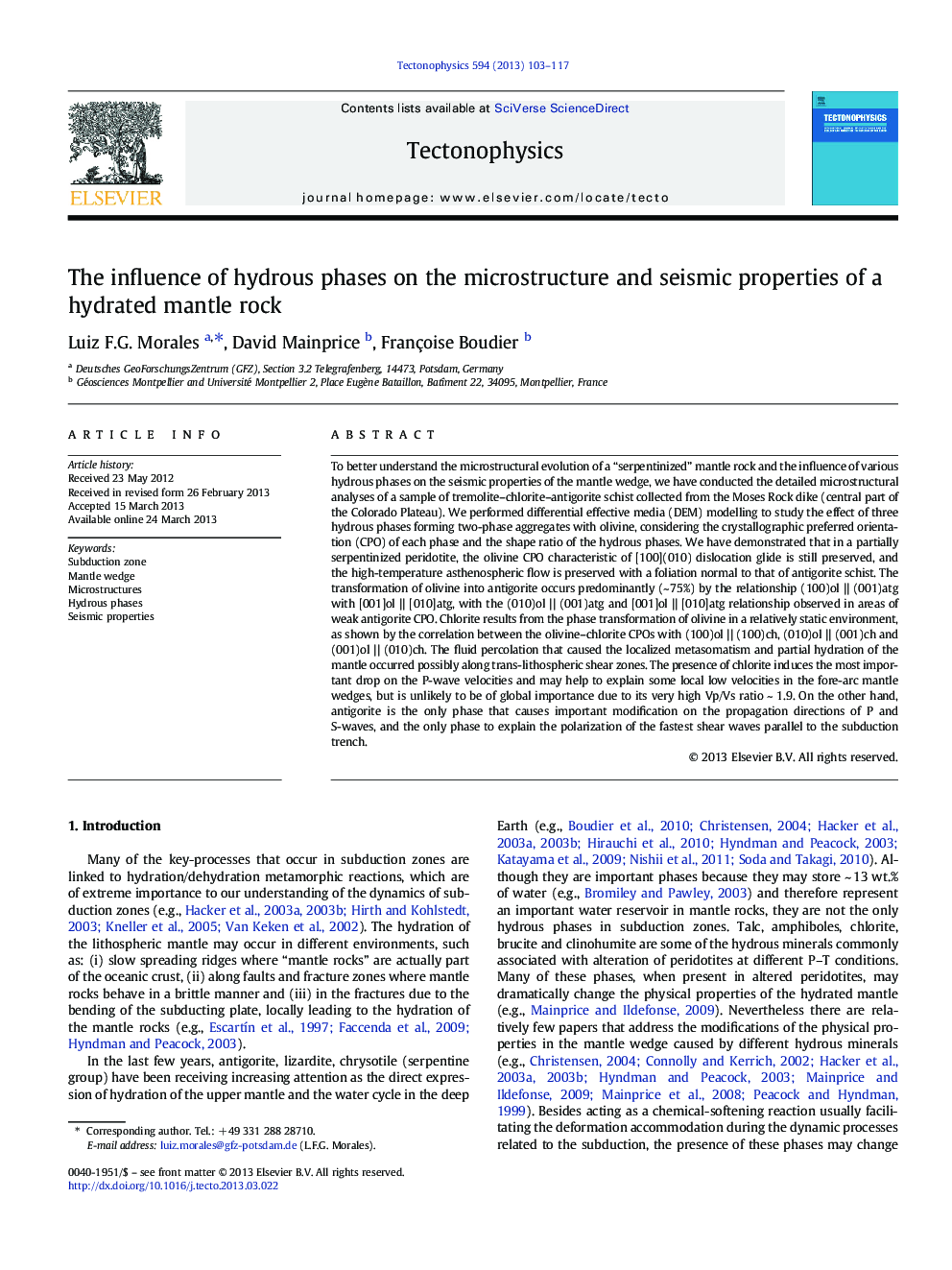| کد مقاله | کد نشریه | سال انتشار | مقاله انگلیسی | نسخه تمام متن |
|---|---|---|---|---|
| 6434146 | 1636791 | 2013 | 15 صفحه PDF | دانلود رایگان |
- We have studied the microstructures of a partially serpentinized mantle rock.
- The effects of some hydrous phases in the mantle were also studied.
- In our sample, hydration of the mantle occurred initially in a static environment.
- Later deformation was accommodated along antigorite bands.
- Hydrous phases strongly affect the seismic properties of the mantle wedge.
To better understand the microstructural evolution of a “serpentinized” mantle rock and the influence of various hydrous phases on the seismic properties of the mantle wedge, we have conducted the detailed microstructural analyses of a sample of tremolite-chlorite-antigorite schist collected from the Moses Rock dike (central part of the Colorado Plateau). We performed differential effective media (DEM) modelling to study the effect of three hydrous phases forming two-phase aggregates with olivine, considering the crystallographic preferred orientation (CPO) of each phase and the shape ratio of the hydrous phases. We have demonstrated that in a partially serpentinized peridotite, the olivine CPO characteristic of [100](010) dislocation glide is still preserved, and the high-temperature asthenospheric flow is preserved with a foliation normal to that of antigorite schist. The transformation of olivine into antigorite occurs predominantly (~ 75%) by the relationship (100)ol || (001)atg with [001]ol || [010]atg, with the (010)ol || (001)atg and [001]ol || [010]atg relationship observed in areas of weak antigorite CPO. Chlorite results from the phase transformation of olivine in a relatively static environment, as shown by the correlation between the olivine-chlorite CPOs with (100)ol || (100)ch, (010)ol || (001)ch and (001)ol || (010)ch. The fluid percolation that caused the localized metasomatism and partial hydration of the mantle occurred possibly along trans-lithospheric shear zones. The presence of chlorite induces the most important drop on the P-wave velocities and may help to explain some local low velocities in the fore-arc mantle wedges, but is unlikely to be of global importance due to its very high Vp/Vs ratio ~ 1.9. On the other hand, antigorite is the only phase that causes important modification on the propagation directions of P and S-waves, and the only phase to explain the polarization of the fastest shear waves parallel to the subduction trench.
Journal: Tectonophysics - Volume 594, 24 May 2013, Pages 103-117
